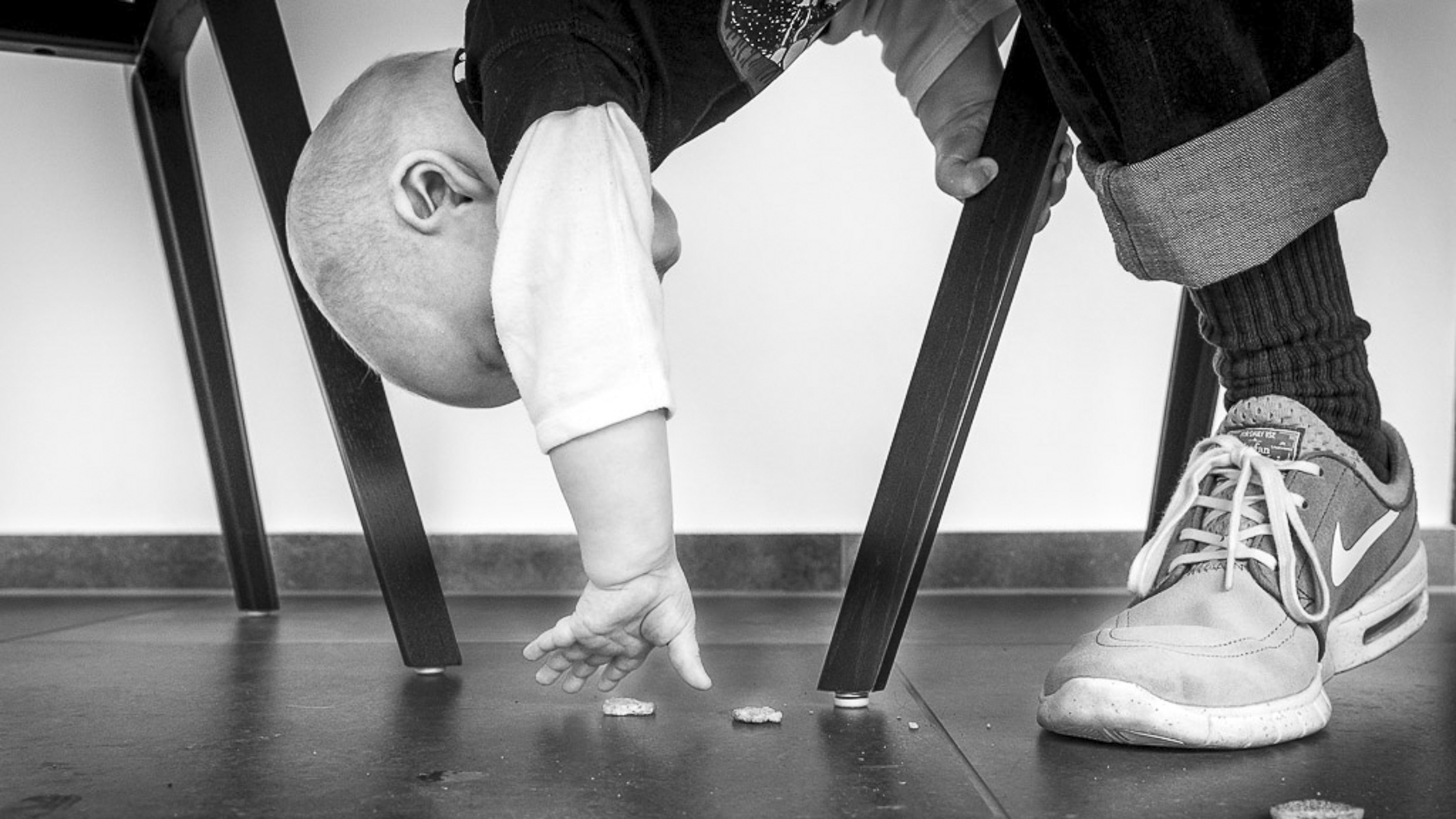All photos are property of Katrin Küllenberg and have been used with permission.
Last year I expanded my profession as a wedding photographer to cover family photography from a documentary perspective as well.
My photography has always been driven by moments, which revealed itself to be an ideal prerequisite for portraying family life.
For a long time family photography has been dominated by generic posed studio portrait sessions which favored an ideal of a perfect family rather than a realistic portrayal of individuals. I am now trying to shift this approach to documentary photography sessions at the family’s own home stretching from two hour sessions to a whole Day-in-a-Life story.

Shooting a family at home means you are building a different kind of relationship with your clients from the start. In contrast to shooting in a studio you visit them in their personal comfort zone, their home, and just by following them around, you learn a lot about the way they relate to each other.

As I am already using the Olympus OM-D E-M1 system for my work as a wedding photographer it was obvious to give it a try with family photography and I found out that it works perfectly well under those different circumstances as well.

When you start photographing families you will notice how difficult it is in the beginning to photograph in a documentary style. Especially kids seem to be conditioned from an early age to react to the presence of a camera with an urge to perform, meaning fake smiling, overacting and looking directly into the camera. All of those reactions are very unnatural and worthless for a documentary but the Olympus E-M1 can help you with a lot of features to get rid of this behavior quickly:
Silent Mode

I really appreciate working in silent mode as kids don’t feel they are “rewarded” by clicks for being in front of a camera. Not hearing a sound they will soon forget about a camera being around, which is enhanced by the fact that the EM1 is also a fairly small camera that is hardly noticed and does not intimidate the kids.
Tilting LCD

Another favorable aspect is the tilting LCD. It lets you photograph a scene from a lot of interesting angles without the need of a viewfinder. Little children are often very low on the floor and by putting the camera down there as well you can photograph from their own perspective and still control the composition.
Lens selection
My favorite lenses for family photography are the Olympus 17mm 1:1.8, the 25mm 1:1.8 and the 45 mm 1:1.8. I use these when I am working indoors with not much light.

Outdoors and in brighter indoor spaces I also use the Olympus 12-40mm 1:2.8 and the 40-150 mm 1:2.8. Especially the 40-150mm helps you to shoot close-up candid moments outside without getting into the kids’ space and action.

The use of the lenses also derives from an essential setback feature of the E-M1 – its limited ISO range. Indoors you should not push the ISO higher than 2000 and as kids usually move a lot and fast you will soon find yourself at a limit speedwise. The prime lenses help to stretch that limit a little bit further.
Depth of field

The system is often criticized for not having the extreme shallow DOF of Full Frame cameras, but here it works to your advantage. With family photography you want context, layers, stories and with the 17mm you can shoot at f 1.8 and still get a lot of information about the surrounding of your object.
File Size

The file size of the camera does not turn out to be of disadvantage either. It makes editing a lot faster, does not demand too much storage, which is quite important to me as even at a two hour family session I will shoot at least 2000 pictures. (often using 10 frames per second) The file size is big enough for family prints.
Flash system
Olympus flash system is not the best in the industry, but while shooting families I only work with available natural light. Using a flash with children does not feel right to me. It seems to inhibit spur of the moment action and reverses everything I wanted from the beginning: a flash makes you very visible as a photographer.

The only time I use flash is when I am doing a family portrait. It is a special session that I offer my clients, called “One of a Lifetime”. It requires that I get to know the clients beforehand and together with them develop an idea that will represent their family. It is a completely contrived picture with a strange natural yet unnatural look.
Using WiFi

This portrait is a composite of several photos lit with one flash and combined in Photoshop. The camera is on a tripod and connected via WiFi to my IPad Pro. The large screen of the IPad Pro is perfect to check the composition. Each family member is lit (remote flash + softbox on tripod) and photographed separately, so that you need to check only the expression of one person and not of the whole family. With the WiFi connection you can move around and assist the person and take the photo remotely at the same time.
Wish list

The system is by far not perfect, but for family work it is really excellent. On my wish list is still:
1.) Better ISO performance
2.) Dual card slots
3,) Better AF-tracking
Conclusion

Different camera systems have different strengths and weaknesses. For working with families in a documentary style (also for family holidays etc.) the Micro 43 is an excellent system, which helps you to capture the decisive moment.
You can follow Katrin’s amazing work on the following social media channels:
Family Photography Website / Photography Website / Facebook / Google Plus / Instagram
